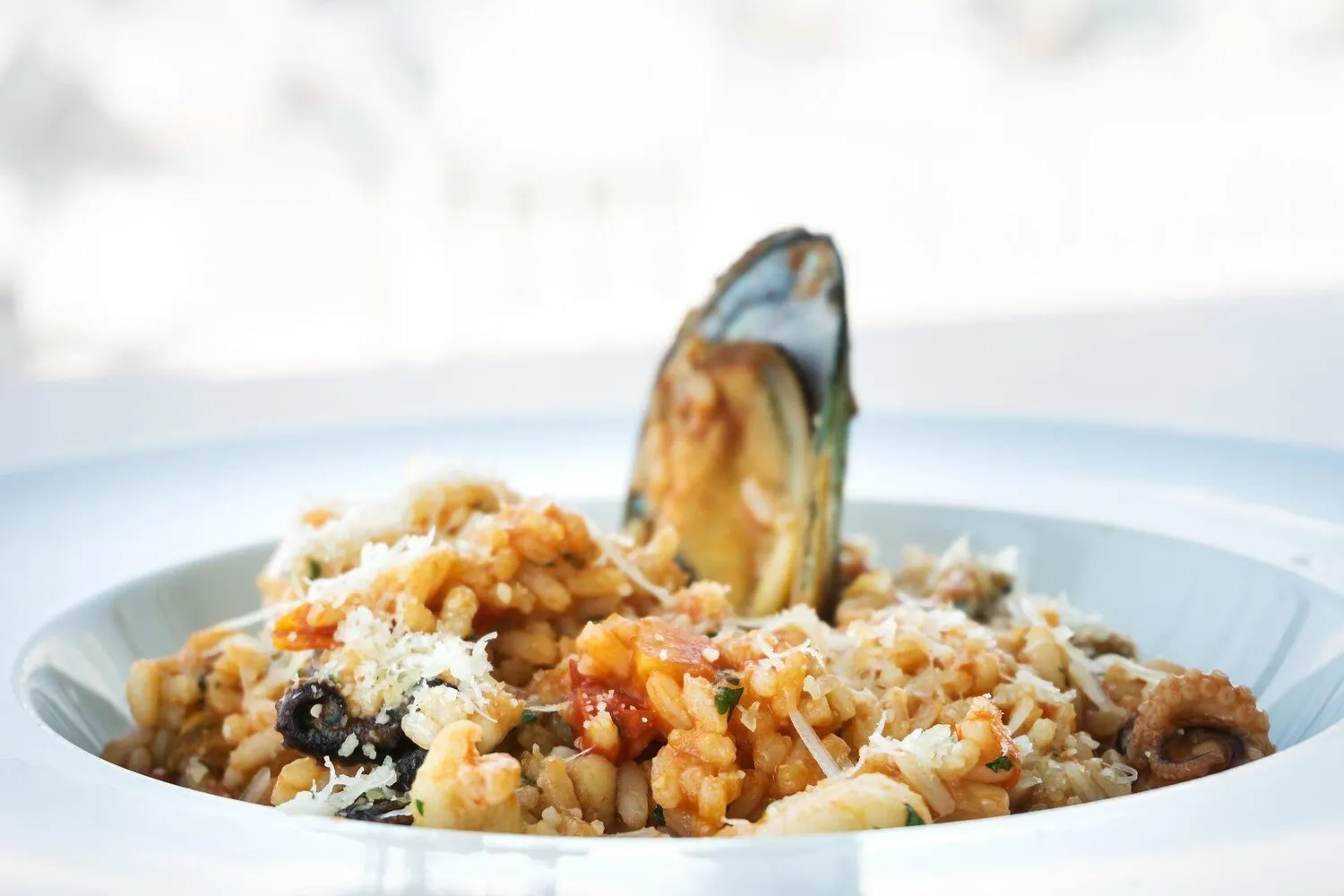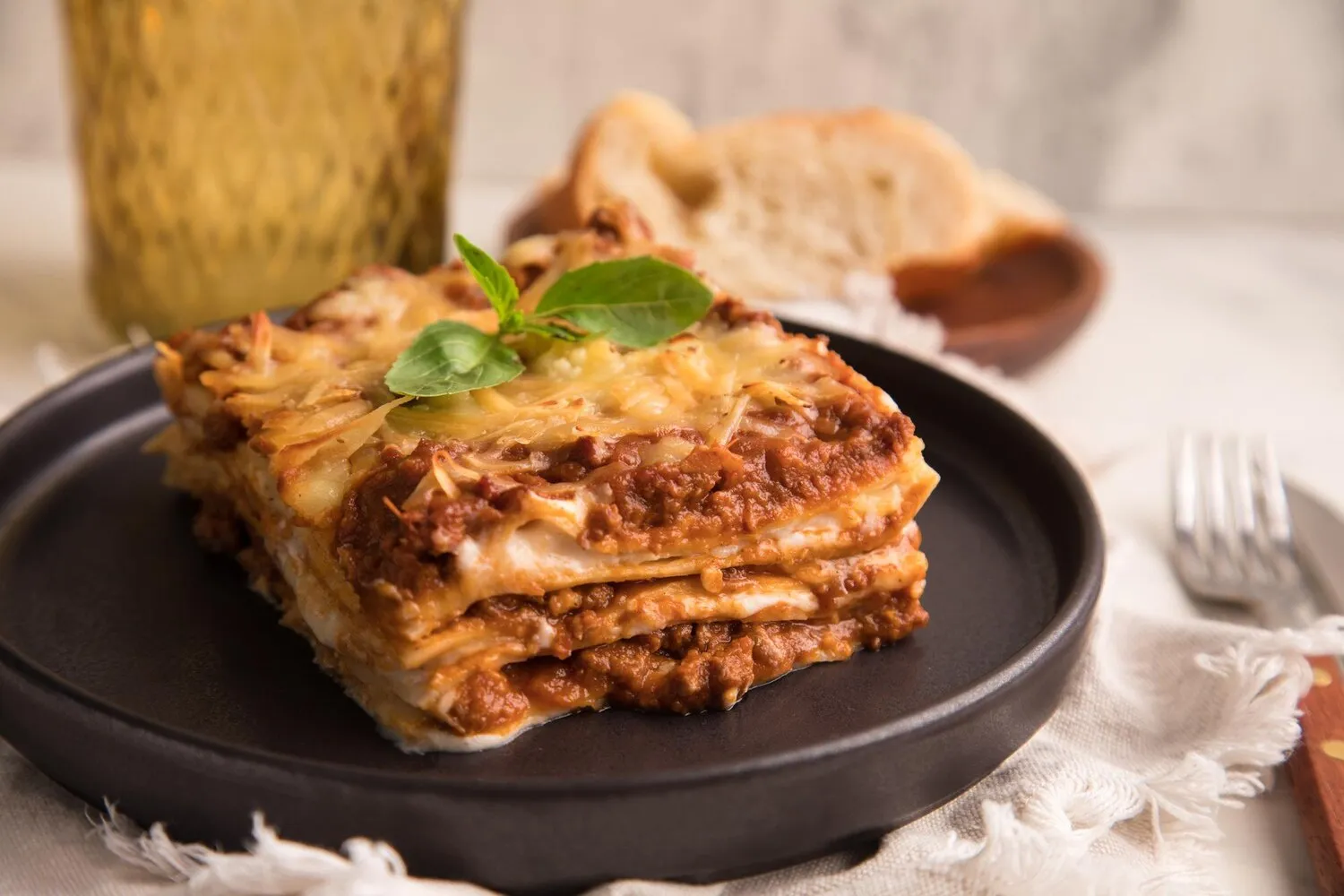
Risotto de Frutos do Mar
Creamy risotto with a variety of seafood like shrimp, mussels, and squid.
Nutrition Facts
* The % Daily Value (DV) tells you how much a nutrient in a serving of food contributes to a daily diet. 2,000 calories a day is used for general nutrition advice.
Bastidores
Risotto's origins can be traced back to Arab influence in Sicily, where rice cultivation was introduced. Over time, rice made its way to northern Italy, particularly the Po Valley. The creamy texture characteristic of risotto developed as cooks experimented with different rice varieties and cooking techniques, eventually incorporating local ingredients like seafood readily available along the coast.
Risotto de Frutos do Mar reflects Italy's strong culinary connection to its coastal regions and the importance of fresh, high-quality ingredients. It's often enjoyed as a primo piatto (first course) in seafood-centric meals and represents a celebration of the sea's bounty.
Regional Variations
Different coastal regions in Italy showcase their local seafood in Risotto de Frutos do Mar. For instance, Venetian versions might highlight local lagoon seafood, while Sicilian versions may include ingredients like swordfish or sea urchin.
Celebratory Dish
Due to the richness and relative complexity of preparation, Risotto de Frutos do Mar is often served during special occasions or family gatherings, representing a shared meal and a symbol of hospitality.
Slow Food Movement
The emphasis on fresh, seasonal ingredients and the slow, deliberate cooking process aligns with the values of the Slow Food movement, which originated in Italy.
Risotto de Frutos do Mar is characterized by a harmonious blend of rich, creamy rice and the briny, delicate flavors of the sea.
The dish prominently features seafood such as shrimp (gamberi), mussels (cozze), clams (vongole), squid (calamari), and sometimes other shellfish like scallops or prawns. These ingredients impart a distinct oceanic sweetness and savory umami. The risotto base is typically prepared with Arborio or Carnaroli rice, cooked slowly in broth (often fish broth) to release its starches and create a creamy texture. White wine adds acidity and depth, while aromatics like garlic, onion, parsley, and sometimes chili flakes enhance the overall flavor profile. A touch of butter and Parmesan cheese further enriches the risotto, creating a luxurious and satisfying dish.
Use High-Quality Rice
Arborio or Carnaroli rice are preferred for their high starch content, which contributes to the creamy texture. Don't rinse the rice before cooking, as this will remove the starch.
Warm Broth is Key
Always use hot broth, added gradually, to maintain the rice's temperature and encourage even cooking and starch release.
Gentle Stirring
Stir the risotto frequently but gently. Over-stirring can make the rice mushy, while under-stirring can cause it to stick to the bottom of the pot.
Fresh Seafood is Essential
Use the freshest seafood possible for the best flavor. Add the seafood towards the end of cooking to prevent it from becoming overcooked and rubbery.
Mantecare
"Mantecare" is the final step of stirring in butter and cheese to create a rich, creamy consistency. This is a crucial part of the risotto making process.
Explore additional Italian dishes and restaurants
Explore ItalianDiscover top dining spots and culinary experiences in Búzios.
Explore BúziosLearn more about the food culture, restaurant scene, and culinary heritage of Brazil.
Explore Brazil
